Md. Mehrab Tanjim
VADER: Video Alignment Differencing and Retrieval
Mar 25, 2023Abstract:We propose VADER, a spatio-temporal matching, alignment, and change summarization method to help fight misinformation spread via manipulated videos. VADER matches and coarsely aligns partial video fragments to candidate videos using a robust visual descriptor and scalable search over adaptively chunked video content. A transformer-based alignment module then refines the temporal localization of the query fragment within the matched video. A space-time comparator module identifies regions of manipulation between aligned content, invariant to any changes due to any residual temporal misalignments or artifacts arising from non-editorial changes of the content. Robustly matching video to a trusted source enables conclusions to be drawn on video provenance, enabling informed trust decisions on content encountered.
Generating Rationales in Visual Question Answering
Apr 04, 2020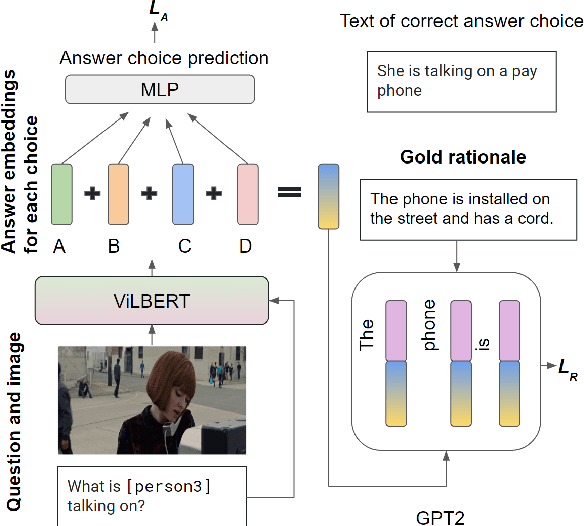
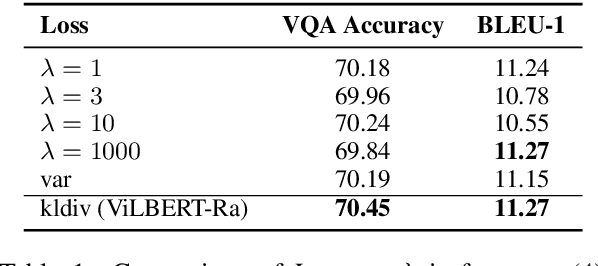
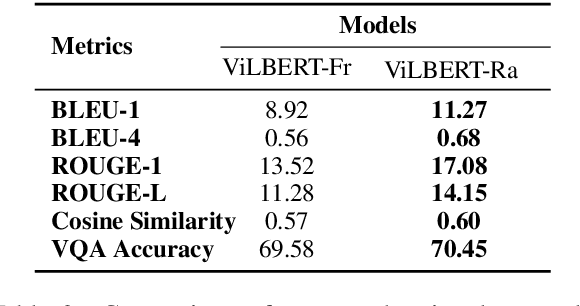

Abstract:Despite recent advances in Visual QuestionAnswering (VQA), it remains a challenge todetermine how much success can be attributedto sound reasoning and comprehension ability.We seek to investigate this question by propos-ing a new task ofrationale generation. Es-sentially, we task a VQA model with generat-ing rationales for the answers it predicts. Weuse data from the Visual Commonsense Rea-soning (VCR) task, as it contains ground-truthrationales along with visual questions and an-swers. We first investigate commonsense un-derstanding in one of the leading VCR mod-els, ViLBERT, by generating rationales frompretrained weights using a state-of-the-art lan-guage model, GPT-2. Next, we seek to jointlytrain ViLBERT with GPT-2 in an end-to-endfashion with the dual task of predicting the an-swer in VQA and generating rationales. Weshow that this kind of training injects com-monsense understanding in the VQA modelthrough quantitative and qualitative evaluationmetrics
Enforcing Reasoning in Visual Commonsense Reasoning
Oct 21, 2019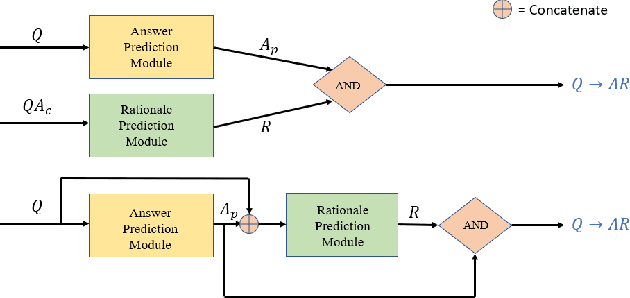
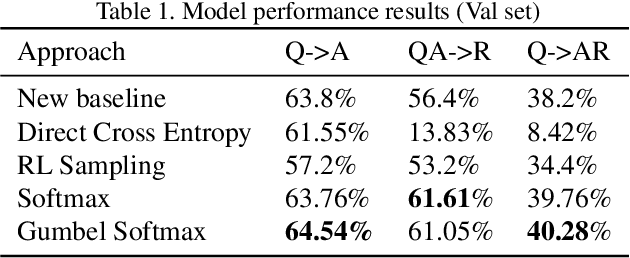
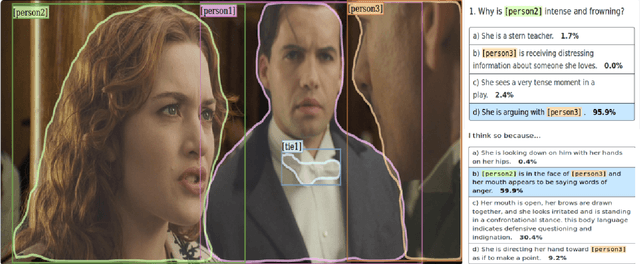
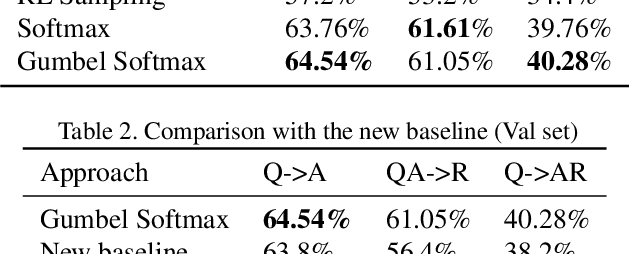
Abstract:The task of Visual Commonsense Reasoning is extremely challenging in the sense that the model has to not only be able to answer a question given an image, but also be able to learn to reason. The baselines introduced in this task are quite limiting because two networks are trained for predicting answers and rationales separately. Question and image is used as input to train answer prediction network while question, image and correct answer are used as input in the rationale prediction network. As rationale is conditioned on the correct answer, it is based on the assumption that we can solve Visual Question Answering task without any error - which is over ambitious. Moreover, such an approach makes both answer and rationale prediction two completely independent VQA tasks rendering cognition task meaningless. In this paper, we seek to address these issues by proposing an end-to-end trainable model which considers both answers and their reasons jointly. Specifically, we first predict the answer for the question and then use the chosen answer to predict the rationale. However, a trivial design of such a model becomes non-differentiable which makes it difficult to train. We solve this issue by proposing four approaches - softmax, gumbel-softmax, reinforcement learning based sampling and direct cross entropy against all pairs of answers and rationales. We demonstrate through experiments that our model performs competitively against current state-of-the-art. We conclude with an analysis of presented approaches and discuss avenues for further work.
 Add to Chrome
Add to Chrome Add to Firefox
Add to Firefox Add to Edge
Add to Edge